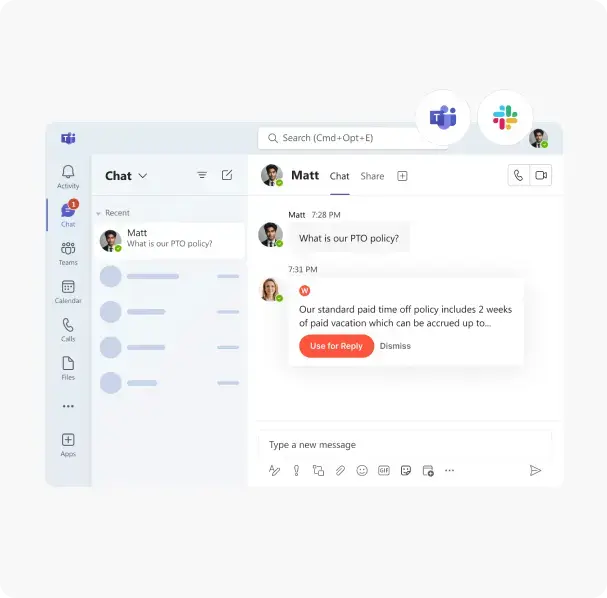HR teams are under growing pressure to deliver fast, accurate, and round-the-clock support to employees, without burning out or expanding headcount. That’s where automation enters the conversation, with HR chatbots offering a compelling solution: instant answers, 24/7 availability, and relief from repetitive questions.
But here’s the dilemma—can an HR bot truly replace a human?
From onboarding queries to sensitive workplace concerns, employees expect support that’s not only efficient but empathetic. As more companies adopt AI-powered HR chatbot software, the line between automation and human interaction is being redefined.
In this blog, we’ll break down the key differences between HR chatbots and live chat support, explore where each excels, and help you decide how to build the right support system for your workforce.
What Is an HR Chatbot?

An HR chatbot is a virtual assistant designed to automate common human resource tasks and employee interactions. Powered by AI, machine learning, and natural language processing (NLP), these bots can:
- Answer frequently asked questions
- Guide employees through onboarding
- Share company policies
- Handle leave requests
- Collect feedback
- Route complex queries to HR reps
These bots are often deployed within collaboration tools like Slack, Microsoft Teams, or intranets, making them easy to access during the workday.
Variants like the employee chatbot or HR helpdesk chatbot may have slightly different focuses (employee experience vs. helpdesk query resolution), but they all share the goal of improving HR efficiency and employee satisfaction through automation.
Related: How Are HR Chatbots Transforming Employee Support and Efficiency in 2025?
What Is Live Chat Support in HR?

Live chat support connects employees directly with HR professionals or support agents via real-time chat platforms. It mimics the convenience of chat but keeps a human in the loop.
This format is often used for:
- Sensitive topics like harassment, conflict, or grievances
- Policy clarifications that may require judgment
- Benefits planning and complex compensation queries
- Personalized guidance
Live chat is not new, but it’s effective, especially in emotionally charged or nuanced conversations that benefit from empathy and discretion.
HR Chatbots: Where They Win

Here are the key advantages of using AI HR chatbot software in your organization:
1. 24/7 Availability
Unlike human agents who clock out, HR chatbots are always on. Whether it’s midnight or a weekend, employees can access information instantly, without waiting in a queue.
2. Instant Answers at Scale
HR chatbots can handle thousands of requests simultaneously without delay. This is ideal for growing companies where HR teams are stretched thin and repetitive queries (e.g., “How many vacation days do I have left?”) bog down productivity.
3. Consistent and Accurate Information
Bots pull data directly from knowledge bases and HR systems. This reduces the risk of inconsistent answers from different team members and ensures up-to-date information is always available.
4. Cost-Effective
Deploying an AI HR chatbot reduces the need for large support teams, especially for handling Tier-1 questions. It’s a long-term cost-saving solution that offers predictable performance.
5. Better Data Collection and Analytics
Chatbots can log every interaction, identify trends in employee questions, and help HR refine policies, FAQs, and communication strategies. Over time, this improves the employee experience and HR effectiveness.
Live Chat Support: When Humans Matter Most

Despite the power of automation, there are areas where human support cannot be replaced.
1. Handling Sensitive Issues
Not all conversations are about PTO balances or policy links. Issues related to discrimination, workplace conflict, or mental health require empathy—a strength that even the best AI HR chatbot cannot replicate.
2. Interpreting Complex Situations
Sometimes, employees don’t ask straightforward questions. They describe scenarios that require a trained HR professional to interpret and guide the next steps. Bots struggle with ambiguity and contextual reasoning.
3. Building Trust
Employees may be more comfortable discussing personal matters with a real person. HR chatbots can’t build rapport, offer reassurance, or provide tailored advice in the way a live human can.
4. Crisis Situations
In emergencies or emotionally intense scenarios, a bot may misfire, misread tone, or escalate too late. This is where human interaction ensures timely and compassionate responses.
HR Chatbot vs. Live Chat: Side-by-Side Comparison
Feature
HR Chatbot
Live Chat Support
Availability
24/7
Business hours only (unless staffed globally)
Response Speed
Instant
Depends on agent availability
Personalization
Basic (based on past queries or profile data)
High (can assess tone, context, intent)
Scalability
Low (limited by agent capacity)
High
Cost
Higher (requires salaries, training)
Lower
Emotional Intelligence
Strong
Limited
Accuracy
High for documented info
Variable, based on agent knowledge
Escalation Handling
Requires manual rules or handoff
Immediate and adaptive
Can Automation Replace Human Conversations in HR?
Short answer: No, but it can handle most of them.
In fact, research suggests that 60–80% of employee HR queries are repetitive and don’t require human input. These are exactly the type of interactions where HR chatbot software thrives, providing quick, self-serve answers so HR teams can focus on more strategic work.
However, the remaining 20–40% are critical. These involve real-time problem-solving, nuanced discussions, and emotional sensitivity—all areas where humans excel.
So, instead of viewing it as HR Chatbot vs. Live Chat, the better question is:
How can you combine HR automation and human support to deliver the best experience?
The Future Is Hybrid: HR Chatbot + Human Support
Forward-thinking HR teams are adopting a tiered support model:
- Tier 1: Handled by HR chatbot (e.g., policy queries, PTO requests)
- Tier 2: Escalated to live chat or HR reps for complex/sensitive issues
This hybrid approach ensures:
- Faster response times
- Reduced workload for HR teams
- Higher employee satisfaction
- More strategic use of human talent
Tools like Winslow, an AI HR chatbot, make this possible by seamlessly integrating with your knowledge base, HRIS, and internal communication tools like Slack or Microsoft Teams. They provide smart handoffs to HR personnel when needed, so nothing falls through the cracks. Conversational HR is indeed the future of HR.
FAQs
1. What’s the difference between an HR chatbot and an employee chatbot?
They’re often used interchangeably, but an employee chatbot focuses broadly on assisting employees across departments (IT, HR, Finance), while an HR chatbot is tailored to HR-specific tasks like leave, benefits, and policy questions.
2. Can HR chatbots integrate with Slack or Microsoft Teams?
Yes. Most modern HR chatbot software supports integrations with collaboration tools, allowing employees to get answers directly where they work.
3. Are HR chatbots secure?
Yes—enterprise-grade chatbots prioritize data privacy and compliance. Look for solutions that are GDPR and SOC 2 compliant.
4. Will HR chatbots replace HR teams?
No. Chatbots free up HR from repetitive tasks, allowing them to focus on strategy, employee engagement, and culture—areas that only humans can lead.
Wrapping Up - HR Chatbot or Live Support?
Automation is no longer a “nice to have”—it’s a necessity for modern HR operations. But that doesn’t mean humans are obsolete.
HR chatbots are excellent for consistency, speed, and scale. Live chat is essential for empathy, judgment, and trust.
When used together, they elevate the entire employee experience, offering the convenience of automation without losing the humanity that defines great HR.
Too Much on HR’s Plate? Let Winslow Share the Load
Winslow’s AI HR chatbot handles repetitive employee questions across Slack, Teams, and email, so your team can focus on what really matters.



